We need to discuss weather forecasts, since the future impacts of weather on the field are as important, if not more important, as the conditions up to date.
Farm Weather Talk #002 – Weather Forecasts
In the first installment of Farm Weather Talk, we discussed the benefit of a site-specific field weather station or IoT device and how they can reduce the “uncontrollable Risk” that farmers face based on the weather to date, but it’s only half of the weather solution. The other part is the forecast. Yes, we need to discuss weather forecasts, since the future impacts of weather on the field are as important, if not more important, as the conditions up to date.
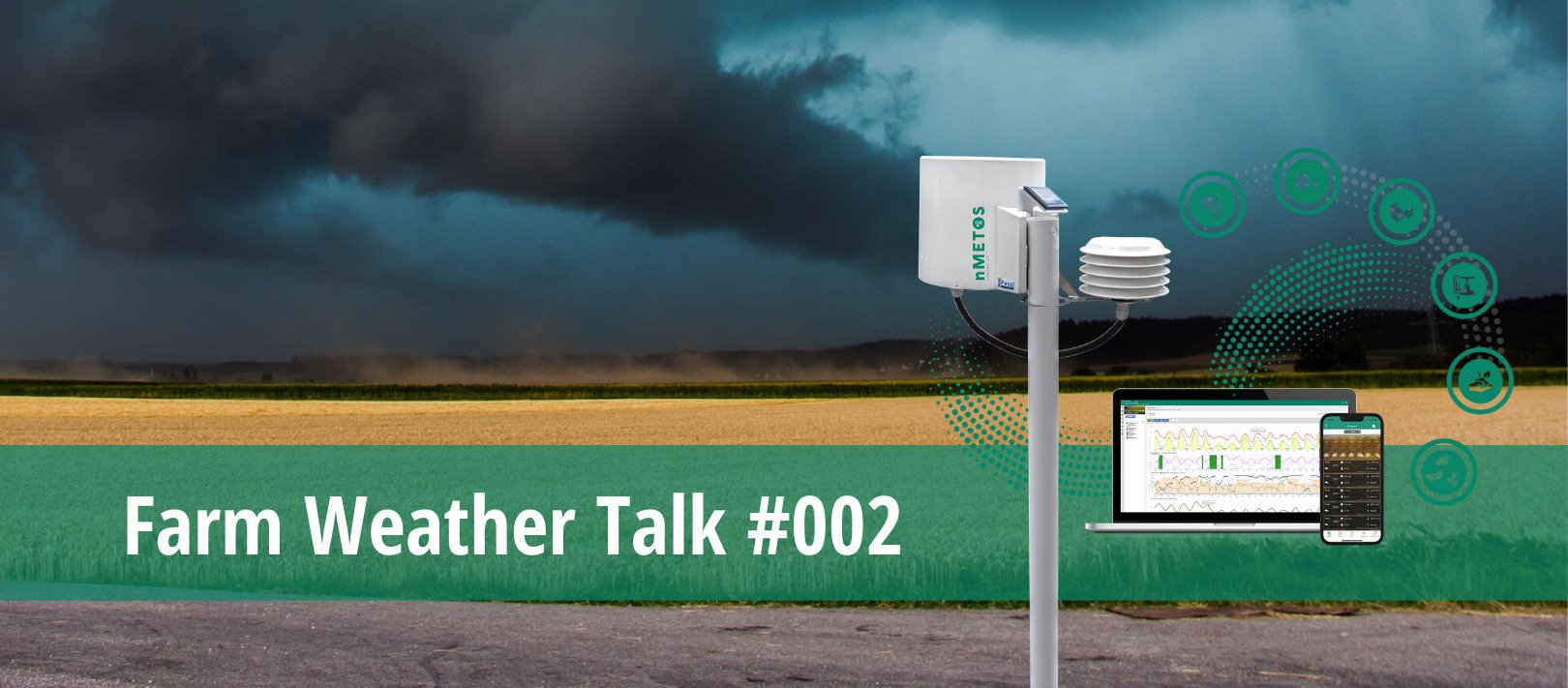
Weather forecasts are often thought to be notoriously wrong; they are over and over the source of many jokes.
Then, how is it possible to have accurate, site-specific, field-level forecasts? It all begins with field-level weather station data and rapid forecast model updates. Let’s explore how this is possible.
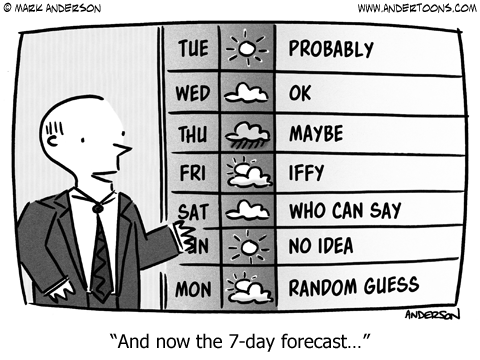
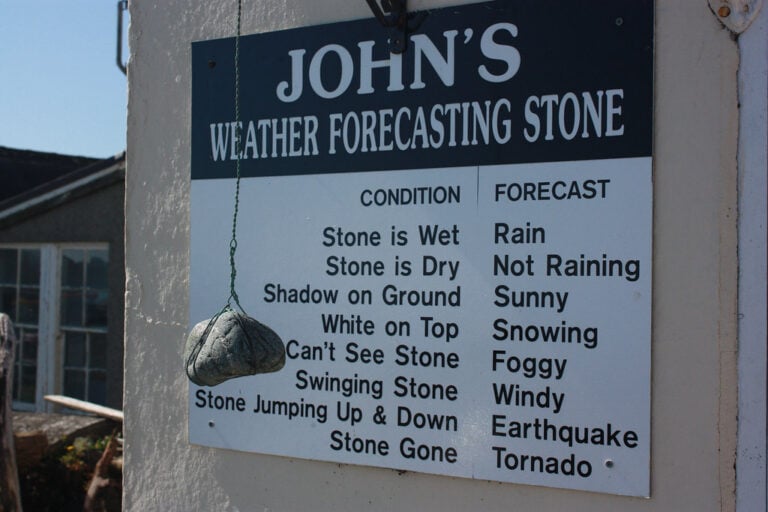
Site-specific field-level weather forecasts
Today, like many other industries, the ability to compute large datasets is becoming easier and faster: cloud computing and cheap CPU costs. This allows meteorologists to create hourly field-specific forecasts that are based on the weather observations from the field-specific station for the next several days.
The data from the field station helps to nudge and tune the forecast: adjust for actual condition recorded on the ground. In addition, the forecast becomes smart for the field, by learning the local conditions with the help of AI (Artificial Intelligence) to pick the most suitable forecast for each location, situation, weather and season, rather than a pure ensemble approach. This means it picks the “best” forecast and not the “average” of all (or variants of) models to make a more accurate site-specific forecast.
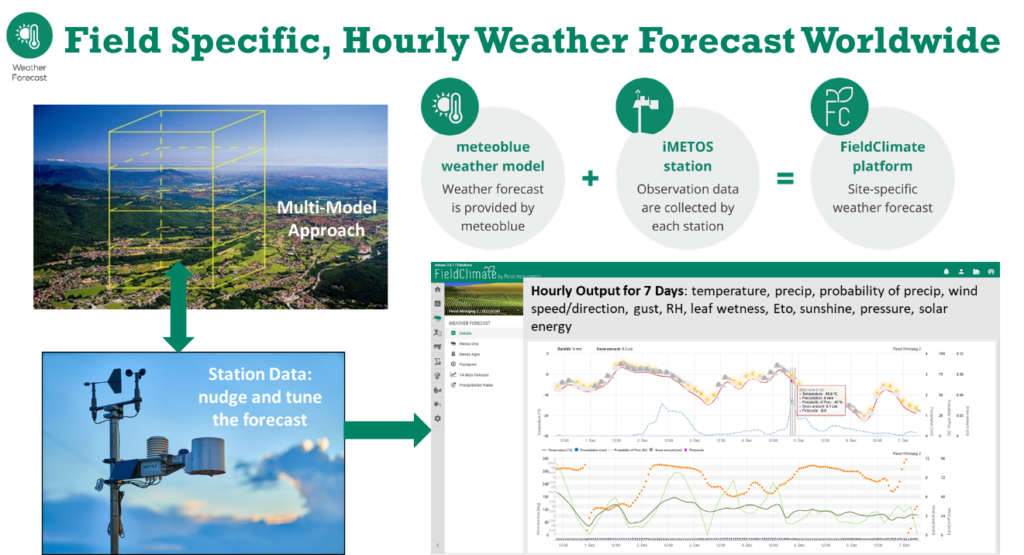
meteoblue®-Pessl approach to field-specific weather forecasting
Let’s break this all the science/technology down so that it’s clear on why this forecast approach is better than what’s available publicly. Today, most meteorological companies or governments offer forecasts based on a city or town location which are derived from a grid approach. Some will use a 15, 10, 5 or 1 km grid to generate the forecast, this is called downscaling to the location.
What is unique about the meteoblue®-Pessl approach is that they combine field level station data with the forecast. In other words, the station provides data to nudge and tune the forecast based on actual ground observations.
In detail, the meteoblue Learning Multimodel (mLM) is a new technique of post-processing the output from various numerical weather forecast models using actual weather station measurements, and artificial intelligence (AI) to pick the most suitable from up to 17 models for each location, situation weather and season, rather than an ensemble approach. This means it picks the “best” forecast and not the “average” of all (or variants of) models to make a more accurate site-specific forecast.
Essentially, the mLM AI learns the meteorology/climate of the field-specific station within a few weeks. The mLM also updates several times a day, which provides further correction to the field-specific forecast.
Ok, we’ve discussed the improved science/technology used to provide field-specific forecasts, but does this improve the accuracy of the forecasts versus what is publicly available? Based on the science/technology used to create the weather forecast from the mLM (meteoblue Learning Multimodel), forecast precision reaches less than 1.3°C hourly absolute error within the first 24 hours. This means that greater than 85% of hourly temperature forecast will be less than 2°C off. For the first 12 hours, the absolute error is less than 0.9°C.
For the precipitation forecast, 79% of events with >1 mm were detected with a false alarm rate of only 40%, achieving a Heidke Skill Score of 0.49, higher than any other provider.
Furthermore, the mLM forecast was evaluated against other published forecast models and was rated as the number 1 forecast for accuracy on more than 300 locations worldwide, beating all other forecasts on precipitation, 11-h temperature, and specifically, number 1 for temperature in the first 12 hours, tied for number 1 for temperature in the first 24 hours, number 1 for dewpoint and wind speed, and distant leader number 1 for precipitation events >1 mm in 24 hours.
The mLM approach is also the only approach validated globally with publicly available results, so customers know what they can expect.
As expected, there is significant precision when these methods are applied, but like any model it’s a forecast and forecasts will change over a short time span and space. Therefore, it’s important to have hourly updates. What’s key is that the error of the forecast model is lowered by applying this approach.
In other studies, when comparing a field-specific forecast against the nearest city/town forecast, to actual values recorded on the field station, the improvement can range from 35 to 65% for temperature and precipitation over 3 days. Again, this is reducing error in the field-specific forecast, which is an improvement over traditional forecasts.

What does all this mean?
It means that you now have a field-specific forecast that is updated hourly for the next 7 days which is highly accurate and is not based on the closest town but built and corrected based on your field station.
So, what do we do with these field specific forecasts?
First, they give us insight into the conditions for many field operations, improve the gut check to the decisions that are being made, like are the winds favorable for spraying over the next 24, 48 or 72 hours. The forecasts also get added into work planning tools/solutions like sowing and spraying windows, harvest conditions, tillage ability, field accessibility, plant nutrition.
These solutions are hourly windows into the conditions for each operation. The site-specific forecasts can also be added to the disease risk models, which then provides a prediction of the future conditions of the next 24, 48 or 72 hours. Of course, yield prediction can also be based on a future forecast, but this uses a long-term average and/or a seasonal adjusted forecast to make an estimate on the potential water supply for yield prediction over the growing season.
In the image below, the field-specific weather station data is combined with the highly accurate field-specific forecast to produce a field-specific plant protection spray window.
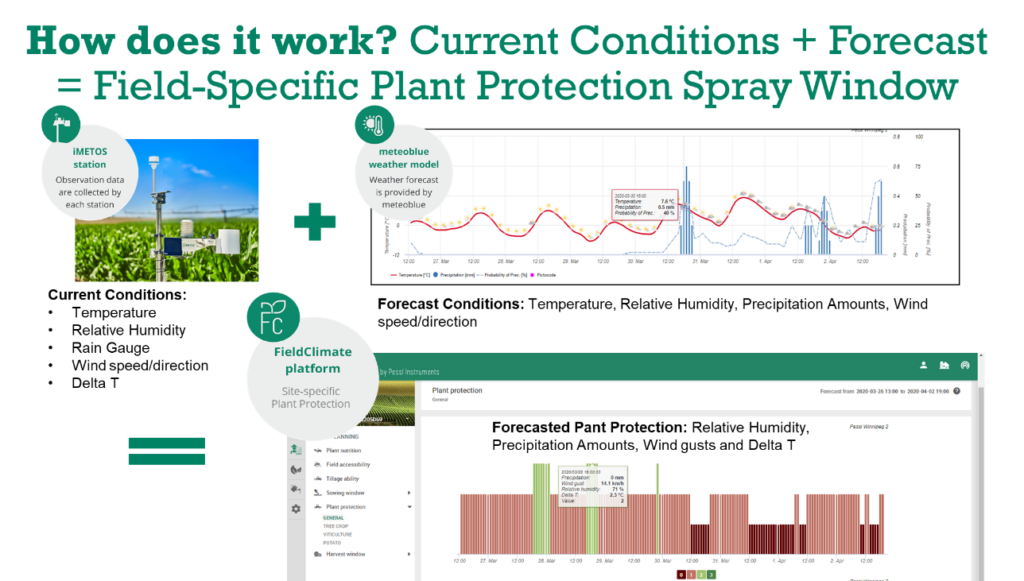
In the next image, the value proposition of the field-specific forecast and station is clearly illustrated since you now have the ability to know the conditions before you go to the field, an advanced hourly window on conditions over the next 7 days and forecasted hourly output for important meteorological variables of wind gust, precipitation, relative humidity, and delta T.
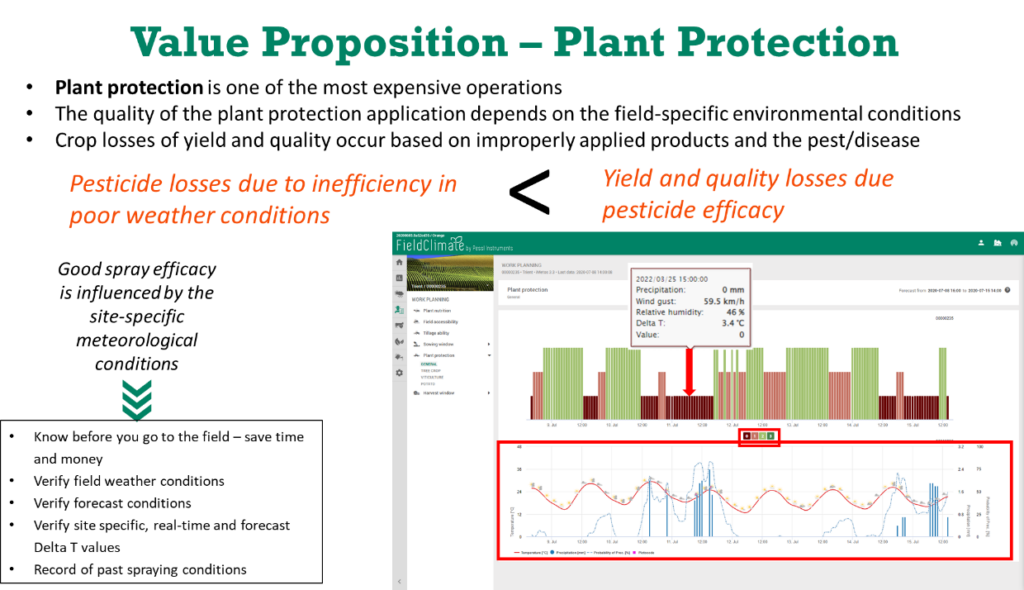
When deciding to BUY A WEATHER STATION or IoT DEVICE for your farm/fields, always include the field-specific hourly weather forecast. The station and forecast should be thought of as peanut butter and jelly, they go hand in hand for farm management decisions.
Explore weather forecast
Near real-time and historic weather is important for understanding what is impacting the crops. Future weather or forecasts are important for planning and future activities. High precision weather forecasts can help you organize your day and reduce and optimize your management decisions.
Curious to see it work? Try it out.
METOS VWS virtual weather station is an indispensable partner for anyone who makes weather-dependent decisions on a daily basis. METOS VWS one month trial includes 1 coordinate placement, weather forecast license (for 1 month) and work planning tools.
Already a METOS® user?
Activate Forecast subscription for a year and get near-real and historic weather data for a better understanding what is impacting the crops and to better plan your future activities. Save time, money and resources.
About the Author:
Guy Ash has worked as agro-meteorologist and earth observations science specialist for the past 30 years. Currently, he is the Global Training and Key Accounts Manager in Canada for Pessl Instruments, Austria. Pessl Instrument is an IoT company that manufactures hardware (loggers and sensors) and software solutions that are focused on the agricultural sector. We work in over 85 countries and have over 70,000 devices and 700,000 sensors deployed for a wide range of agriculture applications: disease management, irrigation, soil moisture, insect traps, crop cameras, weather stations, soil fertility, etc. One of his roles is to provide global training for an extensive list of IoT solutions for a wide variety of crops – rice, wheat, soybeans, oranges, corn, canola, forages, grapes, fruits and vegetables, etc.
![]()
